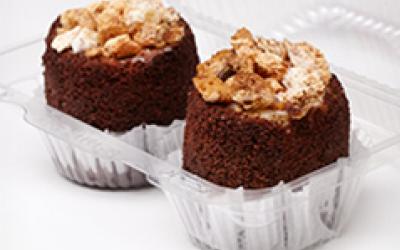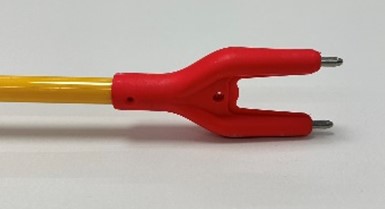Yakut cow becomes a brand of the republic

Future agricultural start-ups of the republic express a desire to keep Yakut cattle. The industry is said to be considered expedient. Especially in hard-to-reach and remote areas of the taiga zone with small pastures. The Ministry of Agriculture of the region noted that it is necessary to take a more rational approach to the organization of agricultural production, depending on agro-climatic conditions. “Obtaining unique MEAT and the production of sour-milk products from the Yakut cow breed is becoming the brand of Yakutia,” commented the department. Today in the project “From city to village: Farmer” - about the Yakut breed of cattle.
The value of MILK and meat of the Yakut breed of cattle is being studied by scientists and medical workers of Yakutia. “The number of those wishing to purchase natural meat with excellent taste and nutritional characteristics, as well as products from milk, is increasing. It has a high content of protein, lactose, vitamins and minerals,” they say.
The Yakut breed of cattle is also the original material value of the Sakha people. When our ancestors lived in the Alas, their life revolved around the Yakut cow. There was even a belief that “losing it means losing the material and economic component of the original culture.”
The DIRECTOR of the Yakutsk cattle GKP, Alexander Artemiev , believes that it is this uniqueness, proven by scientists and noted by the farmers of the republic, that requires attention from agricultural start-ups. Many are faced with the question of whether the current generation will be able to preserve and increase the Yakut breed of cattle?
GKP "Yakutsky cattle" has branches in 7 districts of the republic and in the Markha microdistrict of the city of Yakutsk. In addition, there are 7 basic farms in the republic. Over the past 5 years, the number of Yakut cattle has increased to 2,500 heads, of which about 900 are dairy cows. Today, Yakut cattle are bred in 20 naslegs in 14 districts of the republic, as well as in Yakutsk. In general, the task was set to bring the number of Yakut cattle to 3,000 by 2024, including breeding stock to 1,000. This requires not only state support, but, above all, scientific support.
Basic farms:
SP GKFH Dmitriev Arkady Nikolaevich, Megino-Kangalassky ulus, village of Chuya
HEAD of the Peasant Farm Semenov Viktor Afanasyevich, Verkhnevilyuisky ulus, village of Kyryky
IP GKFKH Kuzmin Egor Nikolaevich, Amginsky ulus, village Emis uch.Elen-Kuel
SPOK "Sylgyyit" Andreev Vlasy Prokopevich, Gorny ulus, s.Keptin
Peasant economy "Elgyai" Lvov Vasily Mikhailovich, Suntarsky ulus, village Elgyai
SHPK "Bayagantai" Androsov Semyon Nikolaevich, Tattinsky ulus, v. Tomtor
IP GK(F)Kh Ivanov Anatoly Semenovich, Khangalassky ulus, village of Ulakhan-An
Scientific approach
Yakut Research Institute of Agriculture named after M.G. Safronova and the state-owned enterprise "Yakutsk cattle" signed a cooperation agreement. YANIISH offers fundamental and applied research. So, in terms of fundamental, studies of the Yakut cattle population using modern molecular genetic methods are considered. As a result of the project, for the first time, based on the analysis of the results of whole genome genotyping, new knowledge about the genetic diversity and phenotypic features of the Yakut native cattle of Yakutia will be obtained. This will make it possible to identify the rarest and most valuable variants of the phenotypes of Yakut cattle for further breeding work.
The Arctic GATU has signed a cooperation agreement with the Orto Doydu Republican Zoo. Within its framework, joint scientific projects aimed at training university students will be implemented. Employees of the university in the zoo carried out insemination of the Yakut cow breed, after which in three months it is planned to carry out diagnostic ultrasound for further examination. During this event, university scientists and students will study the physiological and pathological processes occurring in the body of livestock.
Biologists: Features of the Yakut cow
The Yakut cow is almost one and a half times shorter than the usual Simmentals. It has a dense body and short but strong legs. A newborn calf is slightly smaller than a dog.
The head of the Yakut cow is short with a wide forehead, and the shape and direction of the horns vary, there are no polled animals. The neck is short, thick; the withers are low, wide, the chest is deep, relatively narrow, with a developed dewlap; back and loin straight; the sacrum is even; hindquarters slightly drooping and roof-like, relatively narrow in makloks; setting of the front legs is correct, in the hind legs there is sometimes convergence in the hocks and saber; the belly is voluminous; the udder is small, taut and heavily overgrown with hair, the nipples are hidden in the wool, as a protection against frostbite and midges; the coat is thick with many coarse guard hairs, which allows it to endure cold climates.
A wide palette of colors in cattle speaks of the purity, naturalness of the breed. The Yakut cow has a calm character. But young bulls, of course, are sometimes mischievous. Despite their short stature, Yakut bulls are surprisingly strong animals. The digestive tract of Yakut cows is longer than that of cows of other breeds, so they can digest less nutritious and not juicy food.
It gives little milk, but the fat content is almost twice as high as that of ordinary ones. It also has a high content of protein, lactose, vitamins and minerals.
No less valuable is the meat, namely its marbling. Marble meat is highly valued all over the world, it is a delicacy. This property is inherent in nature, this is a direct consequence of its high fattening qualities.
Challenge for farmers: up to 1,000 dairy cows
Il Darkhan Aisen Nikolaev set the task of bringing the number of cows alone, excluding bulls, to 1000 individuals. Only then will the breed be relatively safe and it will be possible to talk about normal growth, experts say. So far, the Yakut cattle in the Russian classifier is designated as an "endangered species."
Read together with it:
- Матричные РНК-вакцины от COVID продлили жизнь тяжелых раковых больныхМатричные РНК-вакцины против коронавируса продлили жизнь пациентам, больным раком в самой тяжелой, четвертой стадии, сообщает The Washington Post. К такому выводу пришли исследователи Онкологического центра имени М. Д. Андерсона Техасского университета и Университета Флориды. «Эти данные невероятно интересны, но они должны быть подтверждены в ходе третьего этапа клинических испытаний», — заявил од...
- Modernization of poultry farming in the Nizhny Novgorod region: new opportunities and production growthThe project, implemented under the regional preferential lending program, allowed the Russkoye Pole agricultural holding to invest 440 million rubles. Regional Agriculture Minister Nikolai Denisov reported that the organized sector produced 88,400 tons of poultry MEAT in 2024 , with an expected increase to 93,8......
- Increasing egg production of laying hens in Kabardino-Balkaria: successes and prospectsThe increase in chicken population has been a key factor in this growth. Currently, the total number of laying hens in the republic has reached 2.3 million, a 14% increase over last year. This demonstrates that local farmers are actively expanding their farms by implementing modern technologies and poultry care methods. The main reasons for increased egg production include: Improved feeding: Farme...
- Proper insemination of cows: how genetic and physiological factors influence herd productivityGenetics plays a significant role in determining the reproductive fitness of bulls, and daughter pregnancy rates should be compared to accepted standards. If a farm's performance falls short of the baseline, using less-than-optimal bulls can still improve fertility. Cow physiology is also crucial for successful insemination. Feed quality, housing conditions, and veterinary care directly impact res...
- Indonesia: New rules to protect farm animalsKey Provisions of the New Regulation The new draft law , currently being reviewed, sets ambitious goals. it will cover all categories of animals—from farm animals to pets, service animals, and laboratory animals. The primary focus is on implementing a certification system for farmers who are committed to more humane and sustainable farming practices. This will not only improve animal welfare but a...
- Argentine Beef Imports: Challenges for American FarmersOn Sunday , Trump announced that he was considering partial imports of Argentine beef, emphasizing that this would help a "good ally"—Argentina—while lowering domestic MEAT prices . This measure was part of a broader strategy in which his administration approved a $20 billion currency swap to support the Argentine economy. However, as the National Beef Association (NCBA) notes, such an initiative ...
- The EU imposed sanctions against Medvedev's aide and the HSE rector.The sanctions include AvtoVAZ CEO Maxim Sokolov, Medvedev aide Oleg Osipov, HSE Rector Nikita Anisimov, three children's ombudsmen, a North Korean general, and others. In total, the EU has added 21 individuals to the sanctions list .As part of its latest sanctions package, the European Union imposed restrictive measures against individuals, including AvtoVAZ CEO Maxim Sokolov, Assistant to Deputy ...
- Jobs, Musk, Bezos: How Business Gurus Make Meetings Less ExhaustingSteve Jobs once refused to attend a meeting with the US President because the attendee list was too long. Anna Yoshitsugu, Senior Strategy and Development Manager at Uber, explains how business gurus prevent meetings from "stealing" their time.Let's say you hold one meeting each week, it lasts two hours, and there are ten people in attendance, each with an average salary of 1......
- Recognition of merit and dedication. State awards were presented in Minsk to representatives of various fields.October 22, MINSK . Belarusian Prime Minister Alexander Turchin, on behalf of the President, presented state awards to workers in various fields, BELTA reports. "The best representatives of our country's workforce have gathered in this hall," Turchin noted. "Among those receiving awards are representatives of tax authorities, industry, forestry, agriculture, construction, culture, sports, and civi...



























































